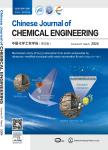Liquid phase equilibrium of phenol extraction from bio-oil produced by biomass pyrolysis using thermodynamic models
Liquid phase equilibrium of phenol extraction from bio-oil produced by biomass pyrolysis using thermodynamic models作者机构:Department of Chemical Engineering Faculty of Engineering Universitas Negeri Semarang
出 版 物:《Chinese Journal of Chemical Engineering》 (中国化学工程学报(英文版))
年 卷 期:2019年第27卷第2期
页 面:391-399页
核心收录:
学科分类:0710[理学-生物学] 0830[工学-环境科学与工程(可授工学、理学、农学学位)] 08[工学] 0817[工学-化学工程与技术] 0703[理学-化学]
基 金:the Ministry of Research Technology and Higher Education Indonesia for the financial support of this work through the research grant of "Produk Terapan" Universitas Negeri Semarang Nomor:084/SP2H/LT/DRPM/IV/2017
主 题:Biomass Pyrolysis Bio-oil UNIFAC NRTL
摘 要:Utilization of biomass as a new and renewable energy source is being actively conducted by various parties. One of the technologies for utilizing or converting biomass as an energy source is pyrolysis, to convert biomass into a more valuable product which is bio-oil. Bio-oil is a condensed liquid from the vapor phase of biomass pyrolysis such as coconut shells and coffee shells. Biomass composition consisting of hemicellulose, cellulose, and lignin will oxidize to phenol which is the main content in bio-oil. The total phenolic compounds contained in bio-oil are 47.03%(coconut shell) and 45%(coffee shell). The content of phenol compounds in corrosive bio-oils still quite high, the use of this bio-oil directly will cause various difficulties in the combustion system due to high viscosity, low calorific value, corrosivity, and instability. Phenol compounds have some benefits as one of the compounds for floor cleaners and disinfectants which are contained in bio-oil.The correlation between experimental data and calculations shows that the UNIQUAC Functional-group Activity Coefficients(UNIFAC) equilibrium model can be used to predict the liquid–liquid equilibrium in the phenol extraction process of the coconut shell pyrolysis bio-oil. While the Non-Random Two Liquid(NRTL) equilibrium model can be used to predict liquid–liquid equilibrium in the extraction process of phenol from bio-oil pyrolysis of coffee shells.



